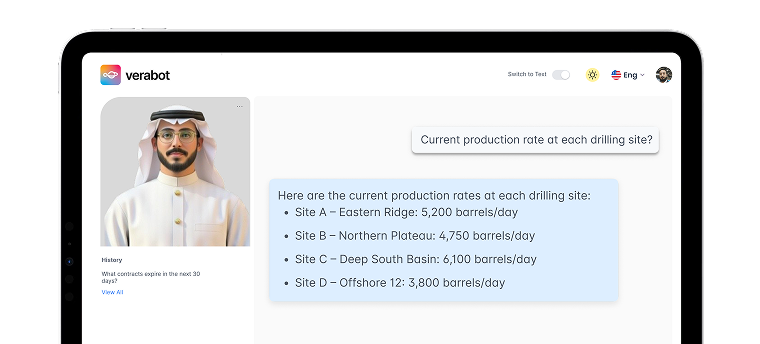Data-driven decision-making is what IT leaders across different industries are after – at least for 3-4 years. Instead of designating a team of data experts to craft dashboards, world leaders are now aiming for intelligent analytics, better known as AI analytics.
One thing is clear: for the past few years, data volumes have exploded, and we have witnessed what can be called a “data boom,” although I am not so sure if we are ready for another of these fancy terms.
The abundance of data, data processing tools, generative AI, and AI in analytics, organizations are realistically reimagining how they obtain, process, store, and utilize data. After all, all data goes in vain if not acted upon in a timely manner.
In today’s blog, we’ll explore data analytics, how it is different from traditional analytics, its main components, and the top use cases for AI in data analytics. Let’s dive right in.
What is AI Analytics?
Imagine a world where artificial intelligence and machine learning blend seamlessly with analytics. Today, it isn’t a far-off dream but a reality commonly known as AI analytics.
AI in analytics has multiple uses: it generates insights, automates processes, delivers predictions, and drives actions, and all these lead to improved business outcomes.
Now, think about merging AI with business intelligence. What you would get is a comprehensive view of your operations, customers, competitors, and the market.
It’s not just understanding what happened but also why it happened. More importantly, it’s about anticipating what’s likely to happen next and the potential consequences if a specific course of action is taken.
AI in analytics is used for predicting customer behavior and detecting patterns in user behavior to strategize for optimized performance or seize opportunities before competitors do, saving significant effort and valuable man-hours.
The most important question here is, are you ready to embrace AI analytics and explore its potential to transform your business?
Recommended Read: Data Analytics & Its Types
The Importance of Using AI in Analytics
AI in analytics plays a pivotal role in bringing automation to the table, making tasks smoother, more accurate, and more efficient. It uses advanced techniques to extract specific insights and suggests actions that must be taken for ideal results.
This combination of smart technology elevates the entire process, making data analysis more effective and insightful. Leveraging this, companies can price their offerings appropriately, improve their customer experience, increase loyalty, draft more effective marketing strategies, and get better outcomes.
The artificial intelligence (AI) market is poised for significant growth in the coming years. Statista’s research indicates a projected compound annual growth rate (CAGR) of 15.83% from 2024 to 2030. This would bring the AI market volume to an impressive US$738.80 billion by 2030.
When we look at this growth on a global scale, the United States stands out as a leader in the AI markets worldwide. It is projected to have the largest market size for AI, with an estimated value of US$106.50 billion in 2024.
Recommended Read: Data Analytics in HR
Main Components in AI Analytics
AI in analytics is important, and there’s no denying that. But to make full use of AI data analytics, certain processes are to be followed to produce the ideal results. Let’s have a look at them.
· Data Collection and Preparation
AI simplifies the process of collecting, cleaning, and integrating data from various sources. Think of it as a highly efficient assistant that can sift through vast volumes of data, spot errors or inconsistencies, and suggest ways to clean up the data. This will result in more accurate and efficient data preparation.
· Deployment and Integration
Using technologies like containerization and cloud-based services, deploying AI models in production environments becomes smooth. AI frameworks also seamlessly integrate with your existing systems and offer APIs for hassle-free integration with other applications for varied use cases.
· Data Exploration and Visualization
AI brings advanced algorithms to the table, enhancing data discovery and visualization and reducing the time spent. It can help uncover hidden patterns and outliers in your data, offering you interactive and intuitive visual representations to make sense of complex data sets.
· Natural Language Processing (NLP)
NLP acts like a translator between you and your computer. It helps resolve persistent language ambiguities, structures the data and enables your computer to communicate with you in your preferred language. From reading and speech recognition to sentiment analysis, NLP provides immediate and understandable responses.
· Natural Language Generation
NLG takes AI analytics tools a step further by generating written reports in your preferred language and automating routine analysis. It helps compliance teams identify crucial information and provides context, explanations, and potential next actions that ease a lot of pressure.
· Machine Learning and Statistical Analysis
Machine Learning learns from historical data, identifies patterns, and makes predictions and decisions without much human intervention. It is the backbone of most AI data analytics applications. Advanced AI analytics algorithms support techniques like deep learning, enabling more accurate and complex modeling capabilities.
· Predictive Analytics
AI supercharges predictive models by analyzing large and diverse data sets, capturing nonlinear relationships, and handling complex features effectively. Techniques like ensemble learning and deep neural networks improve the accuracy and robustness of these models.
· Model Evaluation and Optimization
AI automates and speeds up model evaluation and optimization. It evaluates model performance using various metrics, tunes parameters and optimizes model architectures. Techniques such as Bayesian optimization and genetic algorithms help efficiently search and enhance the overall performance of AI models.
Advantages of Using AI in Analytics
The impact of AI in analytics can be huge, and it can help transform operations significantly. For competitiveness, it offers an edge fueling innovation promising to deliver incredibly precise and focused results.
But what are the practical benefits of AI analytics? Let’s find out.
· Robust Data Analysis Powered by AI
AI takes data analysis to a whole new level and reduces the manual effort to deliver quick results. It swiftly processes vast data volumes, revealing/discovering patterns, trends, and correlations that might be challenging to identify manually and may take a lot of time. This results in a comparatively more precise, comprehensive analysis that paves the way for insightful, data-driven decisions.
· Improved Decision-Making Outlook
AI models can also be seen as personalized strategic advisors. They process complex datasets, perform predictive analysis, and offer recommendations based on historical data patterns. They bring actionable insights that guide your strategic choices in the future, fostering business growth and competitive advantage and helping to improve the decision-making process.
· Automated Data Analysis Methods
Automated Data Analysis methods imply the obsoleteness of old-school, time-consuming, and tedious data analysis tasks. AI analytics handles these, freeing up time for your data analysts and domain experts to focus on interpreting results, crafting strategies, and sparking innovative ideas. Automation minimizes human error, yielding reliable, consistent outcomes.
· Accelerated Data Processing & Analysis
AI has largely replaced hard work with smart work. AI analytics accelerates data processing and analysis and helps you glean insights faster and make quicker decisions. Modern AI analytics platforms and algorithms tackle complex tasks, help operations get streamlined, enhance productivity, and allocate resources more efficiently. This saves significant costs and optimizes resource utilization.
· Better Customer Experiences
AI analytics provides a window into your customers’ behaviors, preferences, and needs. It analyzes customer data and marketing campaigns, optimizes pricing strategies, and enhances customer service. The outcome is elevated customer experiences, improved satisfaction, and significantly improved customer retention, bringing ideal results.
· Identification of New Opportunities
When used right, AI in analytics can help uncover hidden gems and explore horizons that deliver value. The data is brought in from diverse sources and analyzed in different ways, and the AI analytics algorithms spot market trends, identify customer segments that matter more, and find and detect emerging patterns that are overlooked with traditional analysis.
· Proactive Risk Mitigation
AI is also used for timely risk assessment and mitigation. It leverages historical data to detect anomalies, forecast potential risks by looking at patterns, and indicate disasters before they strike. This capability enables you to mitigate risks and make more confident and informed decisions under clearly defined conditions. Proactive risk mitigation brings incredible results.
AI in Analytics: 6 Use Cases by Industries
1. Life Sciences
In the life sciences industry, AI analytics can help analyze vast amounts of data from medical research, patient histories, and clinical trials. It can spot patterns and trends that humans might miss, leading to new discoveries. For instance, it could help find a link between a certain lifestyle habit and a health condition. This could lead to new treatments, better patient care, and even saving lives.
2. Manufacturing
A factory where everything runs smoothly with fewer errors and higher productivity could lead to increased productivity. That’s what AI analytics can do for manufacturing. It can predict when a machine might break down so we can fix it before it causes problems. It can also optimize the production process to make it more efficient and less wasteful.
3. Government
A government serves its citizens better by understanding their needs and making informed decisions. That’s where AI analytics comes in. It can analyze data from various sources, like citizen feedback, public service usage, and social media comments/reviews. This can help the government understand what the people need most and where improvements are needed. It’s like having a big suggestion box that helps the government make the country a better place to live.
4. Mining
Mining as a process is challenging, but what if we could make it safer and more efficient using artificial intelligence? AI analytics can help here by predicting potential risks, analyzing OEE, and keeping oversight of cave-ins or equipment failures. It can also find the best spots to dig based on geological data. AI analytics is like a wise old miner, guiding organizations to be safe and accurate.
5. Oil & Gas
Finding oil and gas without AI and ML and extracting the reserves is like looking for a needle in a haystack. However, AI analytics can help by analyzing seismic data to predict where oil and gas reserves might be found. It can also monitor equipment to prevent leaks and reduce environmental impact, ensuring better OEE and employee safety at all stages of upstream and downstream operations.
6. Retail
Imagine you step into a store where everything is tailored to your preferences, and you get what you want. That’s what AI analytics in retail can do. Diving deep into customer data can help stores personalize their offerings, recommend products, and improve customer service. It can even predict future sales trends, helping stores stock the right products at the right time.
AI in Analytics: 7 Use Cases by Applications
1. Predictive Analytics
Predictive analytics, powered by AI, is a modern-day approach that leverages historical data and patterns to forecast future events. It’s very similar to having a sophisticated forecasting tool that can anticipate consumer behavior, market trends, or even potential risks. This unique capability enables businesses to strategize effectively and stay ahead of the curve.
2. Predictive Maintenance
AI analytics revolutionizes maintenance with its predictive capabilities. By identifying when machinery or equipment might require servicing, AI prevents unexpected breakdowns. Imagine having a proactive maintenance engineer who can pre-emptively address issues, ensuring uninterrupted operations.
3. Customer Service
AI in customer service enhances efficiency and responsiveness. By predicting customer inquiries and providing instant solutions, AI improves customer experience. Imagine a highly intelligent customer representative who knows your needs before you express them, leading to faster resolution and improved customer satisfaction.
4. Demand Forecasting
AI analytics excels in demand forecasting. Through analyzing sales patterns and other influencing factors, AI can accurately predict future product demand. This ensures optimal stock levels, minimizing both overstock and stockouts. It’s like having an experienced and knowledgeable business analyst who ensures that your favorite products are always available when you need them.
5. Inventory Management
In inventory management, AI analytics provides a strategic advantage. It tracks inventory levels, predicts when replenishment is needed, and suggests optimal reorder timings. It’s akin to having an efficient inventory manager ensuring smooth operations and preventing stockouts and surplus.
6. Fraud Detection
AI analytics plays a crucial role in fraud detection. By scrutinizing vast sets of financial data, AI can identify unusual patterns indicative of fraudulent activity. Imagine a vigilant security officer who can spot anomalies that might go unnoticed by human eyes, thereby enhancing the security of financial transactions.
7. Personalized Plans
AI analytics allows the development of personalized plans tailored to individual needs. Whether it’s a fitness requirement, a learning program, or a dietary treatment plan, AI considers variables such as age, preferences, and specific goals to provide appropriate recommendations. It’s like having a personal advisor, creating customized solutions that lead to higher satisfaction and better results.
FAQs – AI Analytics
Q1: What is analytics AI?
Analytics AI, or AI analytics/AI in analytics, refers to the application of artificial intelligence (AI) techniques and algorithms in analyzing vast datasets to extract valuable insights, trends, and patterns. It leverages machine learning and data processing capabilities to enhance decision-making processes across various industries.
Q2: How is AI used in analytics?
AI is employed in analytics through advanced algorithms and custom machine learning models, enabling automated data analysis that reduces the time to analyze data and get the desired outcome.
It optimizes processes, improves accuracy, and provides actionable insights after processing and storing data on multiple parameters. From predictive analytics to natural language processing, the usage of AI enhances the depth and efficiency of data interpretation, leading to more informed decision-making.
Q3: How to use Gen AI in analytics?
Gen AI, or Generative AI, can be applied in analytics by utilizing its capabilities to create data, models, or insights. In analytics, Gen AI can contribute to the generation of synthetic data for testing models, creating predictive scenarios, or even developing innovative solutions by simulating diverse data environments and more.
Q4: What is the use of business analytics?
Business analytics involves the application of statistical analysis and predictive modeling to extract insights from data, guiding strategic decision-making in organizations. AI in business analytics enhances this process by automating data interpretation, optimizing resource allocation, and forecasting trends, thereby providing a competitive edge.
Q5: How are the 4 types of AI used in data analytics?
The four types of AI—reactive machines, limited memory, theory of mind, and self-aware AI—contribute to data analytics in various ways. Reactive machines excel in specific tasks, limited memory AI adapts based on experience, theory of mind AI understands human emotions, and self-aware AI possesses self-awareness.
Each type plays a role in enhancing the depth and breadth of data analytics, making it a more comprehensive and insightful process. In 2024 and beyond, these advancements in AI analytics are set to revolutionize data interpretation, making it more efficient, accurate, and impactful across industries.
Conclusion
As we navigate the ever-evolving landscape of data AI solutions, it’s become evident that AI analytics will continue to redefine the narrative in 2024 and cause further improvement. The precision and efficiency brought forth by AI analytics are reshaping industries, from life sciences and retail to mining and manufacturing.
The availability of predictive insights is driving decision-making, and now businesses can proactively respond to challenges, ensuring not only survival but a sustainable growth trajectory. The dynamic trio of data, cloud, and AI is ushering us into an era where smart analytics isn’t a tool but a strategic imperative need of the hour.
As we embrace the transformative power of AI in analytics, we position ourselves not merely to adapt but to thrive in an era where data isn’t just accumulated but intelligently deciphered, laying the foundation for a future where informed decisions steer the course – success becomes just a matter of time.






